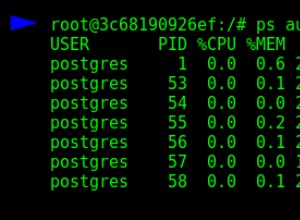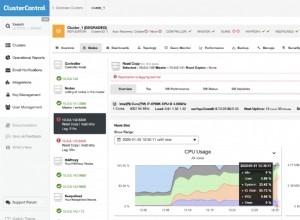Per ottenere questo risultato, dovrai girare i dati. MySQL non ha una funzione pivot ma puoi usare una funzione aggregata con un CASE espressione.
Se il numero di date è noto, puoi codificare la query:
select client_id,
max(case when rownum = 1 then date end) Date1,
max(case when rownum = 2 then date end) Date2,
max(case when rownum = 3 then date end) Date3
from
(
select client_id,
date,
@row:=if(@prev=client_id, @row,0) + 1 as rownum,
@prev:=client_id
from yourtable, (SELECT @row:=0, @prev:=null) r
order by client_id, date
) s
group by client_id
order by client_id, date
Vedi SQL Fiddle con demo
Ho implementato le variabili utente per assegnare un numero di riga a ciascun record all'interno di client_id gruppo.
Se disponi di un numero sconosciuto di date, dovrai utilizzare un'istruzione preparata per creare sql in modo dinamico:
SET @sql = NULL;
SELECT
GROUP_CONCAT(DISTINCT
CONCAT(
'MAX(CASE WHEN rownum = ',
rownum,
' THEN date END) AS Date_',
rownum
)
) INTO @sql
from
(
select client_id,
date,
@row:=if(@prev=client_id, @row,0) + 1 as rownum,
@prev:=client_id
from yourtable, (SELECT @row:=0) r
order by client_id, date
) s
order by client_id, date;
SET @sql
= CONCAT('SELECT client_id, ', @sql, '
from
(
select client_id,
date,
@row:=if(@prev=client_id, @row,0) + 1 as rownum,
@prev:=client_id
from yourtable, (SELECT @row:=0) r
order by client_id, date
) s
group by client_id
order by client_id, date');
PREPARE stmt FROM @sql;
EXECUTE stmt;
DEALLOCATE PREPARE stmt;
Vedi SQL Fiddle con demo .
Entrambi danno il risultato:
| CLIENT_ID | DATE_1 | DATE_2 | DATE_3 |
--------------------------------------------------------------------------------------------------------------
| 1 | February, 03 2013 00:00:00+0000 | February, 10 2013 00:00:00+0000 | May, 12 2013 00:00:00+0000 |
| 2 | February, 03 2013 00:00:00+0000 | July, 15 2013 00:00:00+0000 | (null) |




